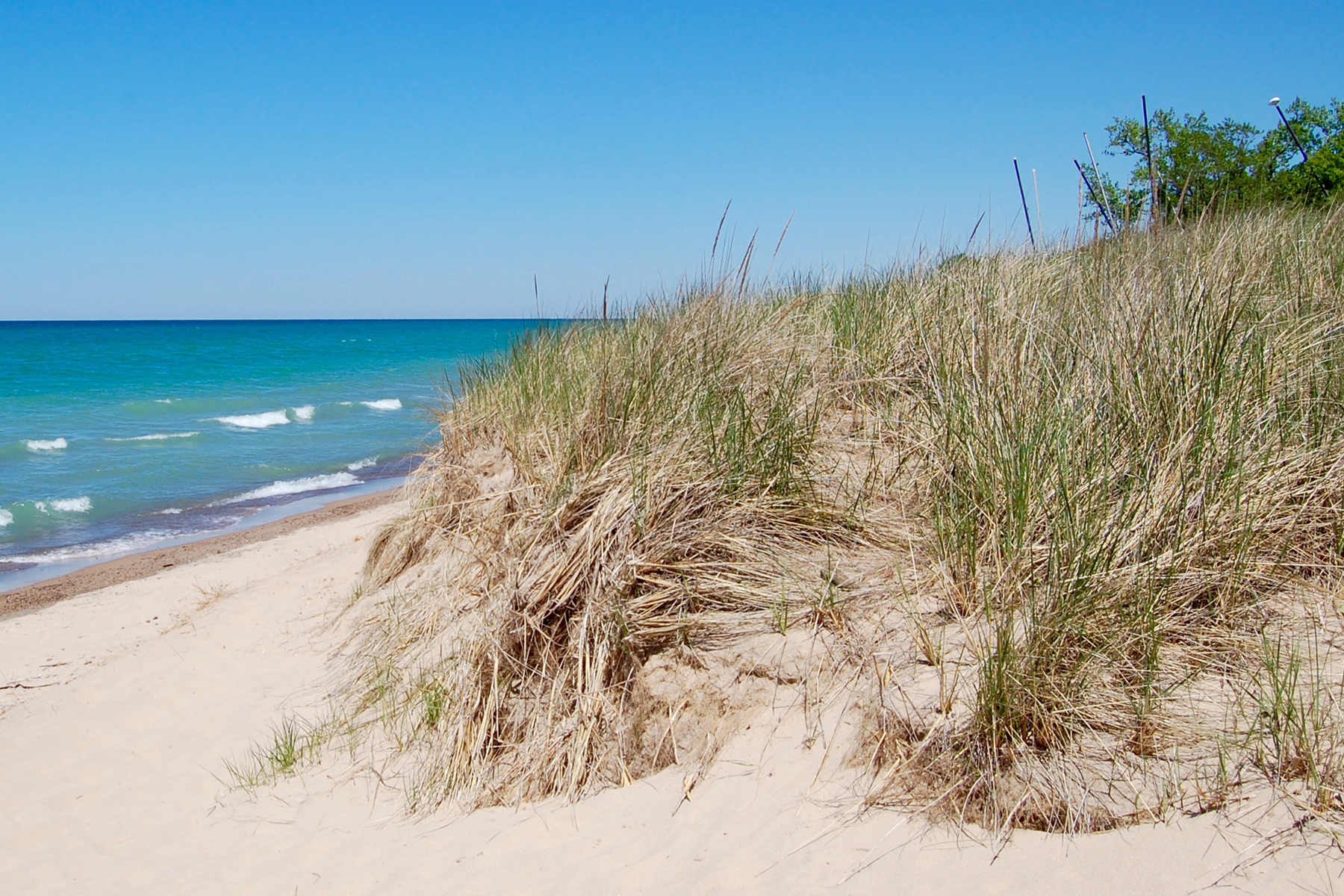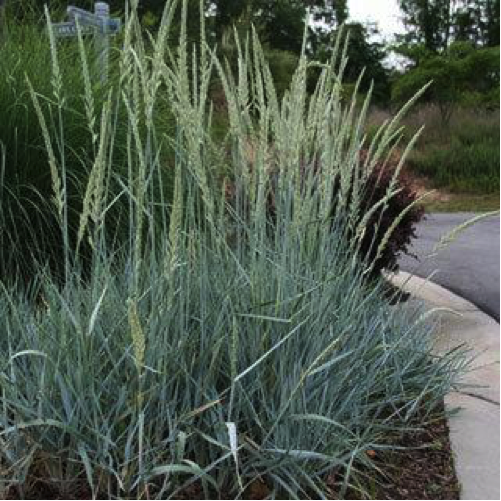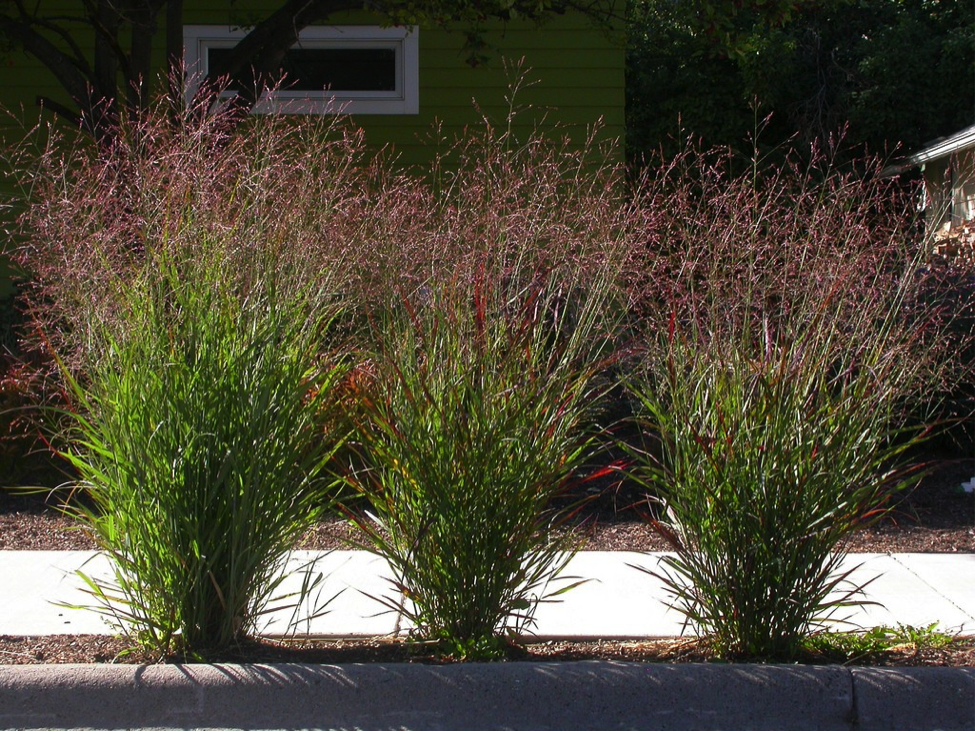

Lyme Grass
Terry Bonace

Beverly Shores and the Indiana Dunes are blessed with several native beach grasses that beautify and stabilize our sand dunes. Marram grass (Ammophila breviligulata) grows closer to the water than most other dune grasses, appearing in large clumps with pale brown spikes rising above the green foliage and holding fast the shifting sand dunes exposed to wind and water. Unfortunately some non-native grasses can occupy this same habitat and potentially replace marram grass. Most threatening of these species is lyme grass (Leymus arenarius). Lyme grass is very similar to marram grass in appearance and habitat but has a distinctive blue-gray color to the leaves. It can be seen in Beverly Shores growing quite robustly around the perimeter of the Depot Museum and in front of several houses along Lake Front Drive.

Lyme grass quickly establishes itself and, because it spreads by underground roots (rhizomes), it is sometimes planted for beach erosion control. Lyme grass mixes in readily with marram grass and other native dunes species and can begin to out-compete and replace the native grasses. Once mixed with the natives, the only option for removing the lyme grass is to kill both the natives and the invasive lyme grass with herbicides.
Lyme grass was introduced from Europe and Asia and has been planted in North America not only because of its attractive blue-grey foliage but also because it tolerates the harsh conditions found in a beach front community with sandy, dry, unstable soils.
The Great Lakes’ dune flora and fauna have been evolving for thousands of years and form a complex ecological web. Introducing and possibly replacing marram grass with lyme grass could have unexpected consequences. All of the dune plant and animal community, including sea rocket, winged pigweed, sand reed grass, little bluestem, sand cherry and countless other insects, spiders, fungi and other species could be potentially overtaken by this alien species.
Lyme grass is commonly offered for sale by many nurseries, as an Internet search easily reveals, so though it appears on the Indiana Department of Natural Resource’s web site as an “invasive, exotic plant,” its sale is not restricted in Indiana. Wisconsin (where it is prohibited) and Michigan have already reported lyme grass as a problem on their Lake Michigan shores. The Northeast Illinois Invasive Plant Partnership has targeted it for early detection and response. Here in Indiana, it has appeared at several sites along Indiana's shoreline, including the dunes at Marquette Park.
If you have lyme grass and wish to rid your property of it, treatment of the stems with a glyphosate solution (“RoundUp” is a common brand of glyphosate-containing herbicide) in early spring before other native species emerge is effective. If applying a herbicide like glyphosate, always carefully follow the label directions as you should for all pesticides. Pulling out the plants alone is not effective for removal because rhizomes and root fragments remain in the soil and re-sprout.
There are many native grasses that you can plant that are very attractive, adapt well to our sandy soils, and do not pose a risk to our native dune grasses. Switch grass (Panicum virgatum) grows tall and stately in late summer and remains so, even through the winter, providing winter interest and wild life cover. Broom sedge (Andropogon virginicus) and prairie dropseed (Sporobolus heterolepis) are less statuesque but are handsome plants. Broom sedge is commonly found along the lake shore and is a little shorter than switch grass. Prairie drop seed, though not commonly found along the dunes, is a native prairie plant of the region and does well in our soils, forming round tufts of arching leaves that also provide fall and winter interest. Some beautiful specimens of prairie dropseed can be seen on the southeast corner of the “Four Corners” garden at Broadway and Beverly Drive. Though prairie dropseed plants can be purchased from nurseries, broom sedge appears to be primarily available as seed, so some patience will be required to grow it.



If you need help to identify lyme grass or native grasses on your property, the Environmental Restoration Group (ERG) will be glad to help identify the plants for you. Don’t hesitate to contact Terry Bonace (tbonace@gmail.com), Hans Lagoni (hlagoni@comcast.net ) or Bill Schaudt (blschaudt2@gmail.com) for assistance.